Day 3 of a 3-day Spring Migration tour in Norfolk. The weather was much nicer today – lots of blue sky and sunshine. But there was a blustery S/SSW wind with gusts up to 34mph in the afternoon, which was not in the forecast and meant that it didn’t feel as warm as the heady 16C it reached. Still, it almost felt like spring at last!
Our destination for the morning was Cley. First, we headed down Beach Road towards the car park, stopping briefly on the way to look at three Wheatears which flew from the wires and side of the road by the West Bank, landing out on the fence on the edge of the reeds the other side. Further on, a Bar-tailed Godwit was feeding on the Eye Field pool but was chased off by one of the local Oystercatchers as we pulled up to look at it.
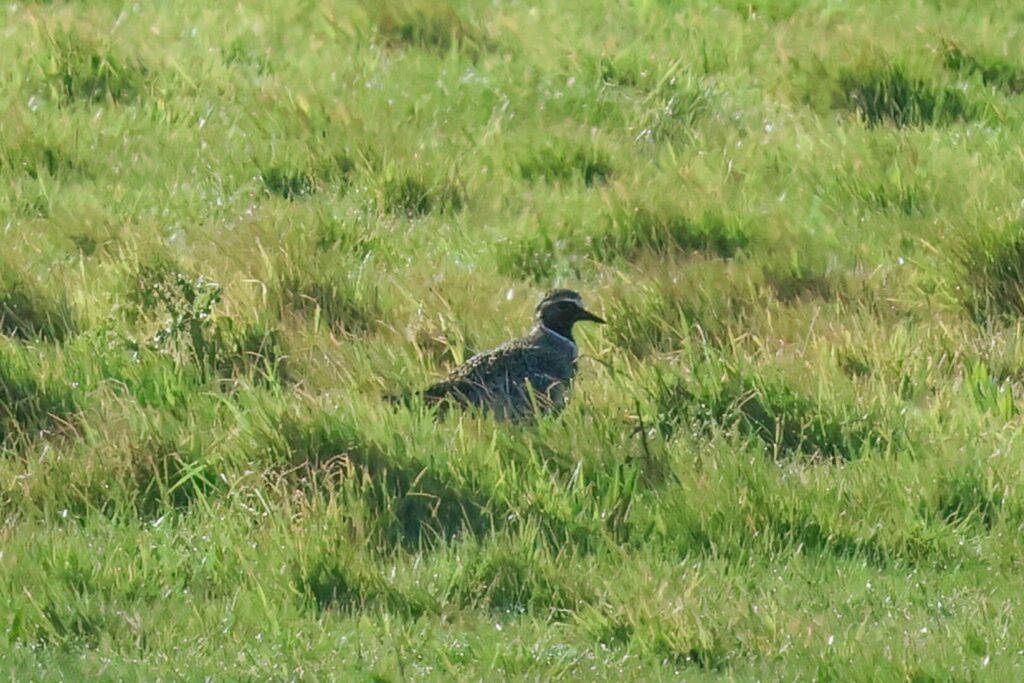
We parked in the car park and got out of the minibus. There were two Skylarks in the overflow car park and it took a bit of time to find the smart summer plumage Golden Plover in the field beyond, as it kept sitting down in the grass. When it flew in a bit closer, it too was set upon by the pair of Oystercatchers although it appeared less willing to be chased off.
Glancing down along the shingle to the east we noticed a harrier flying towards us, hugging the ground. It looked small and slim and as it turned we could see the white square at the base of its tail – a ‘ringtail’ Hen Harrier. It cut out across the Eye Field and we watched it fly across in front of us before continuing off up the start of Blakeney Point.
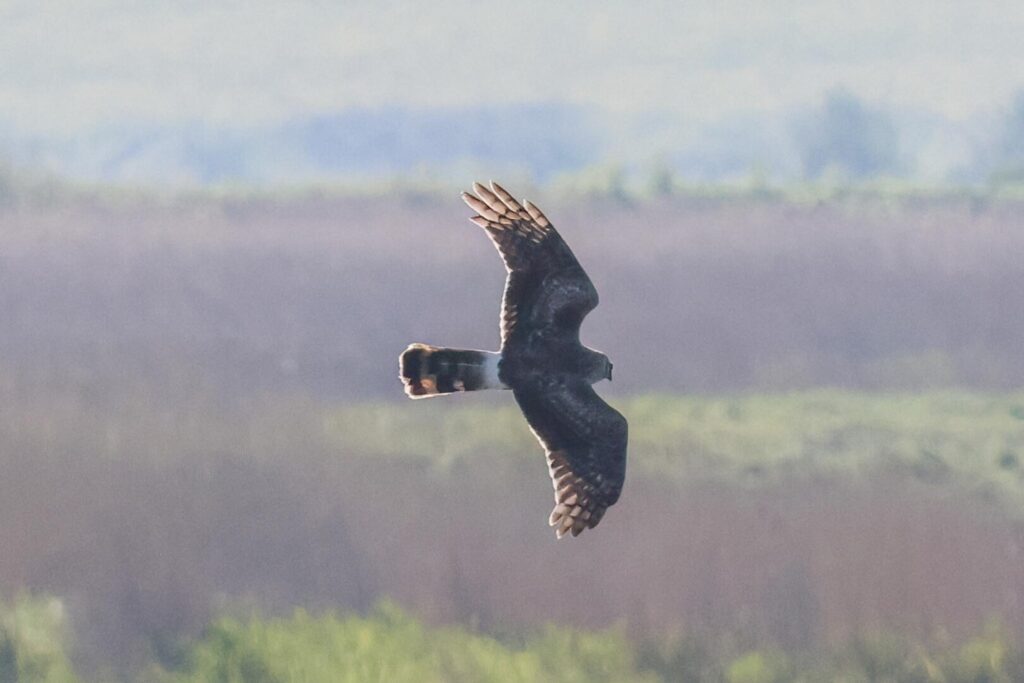
There had been a Wheatear briefly distantly on the fence by the pill box, but as we got back to the minibus it had worked its way closer and was now on one of the posts by the corner of the car park.
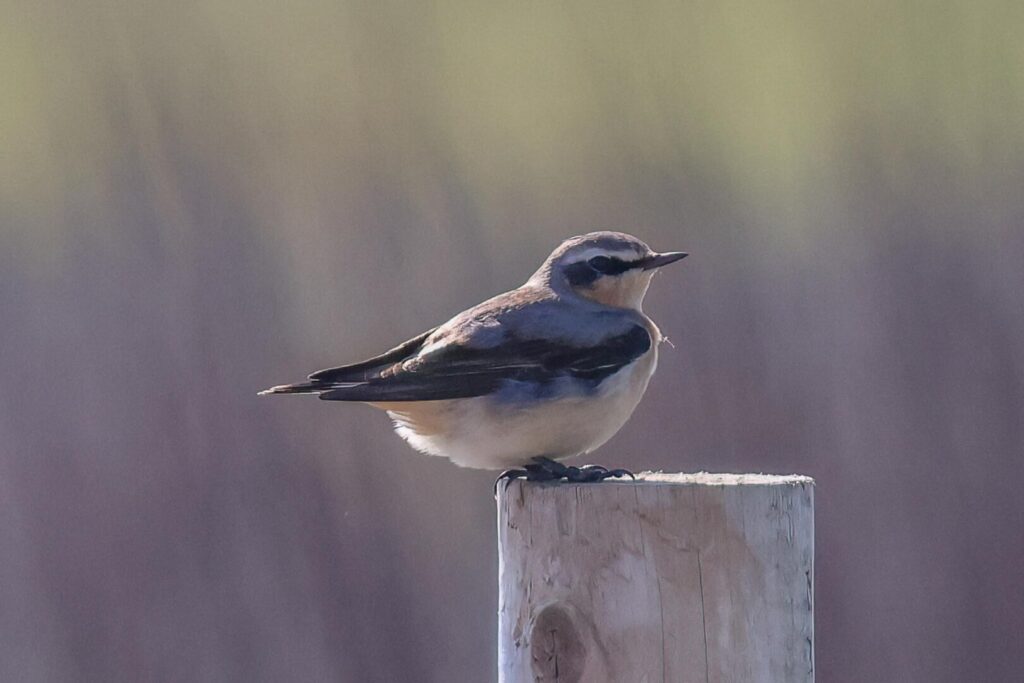
We drove round and parked in front of Walsey Hills next. A Sedge Warbler was singing in the ditch opposite and a Cetti’s Warbler shouted at us from the brambles. A Lapwing was displaying out over the grazing marshes behind, flying up and down, twisting and turning. A couple of Little Grebes laughed at us from Snipe’s Marsh as we walked along the road and up to the start of the East Bank.
It was sheltered on the start of the East Bank, in the lee of North Foreland plantation. Another couple of Sedge Warblers were singing and one perched up nicely in the reeds for us. Just beyond, a Reed Warbler was singing its more rhythmic song at the back of Don’s Pool. We could imagine setting a metronome to that one! There were more Reed Warblers singing in the ditch further along, but they were keeping tucked well down out of the wind today.
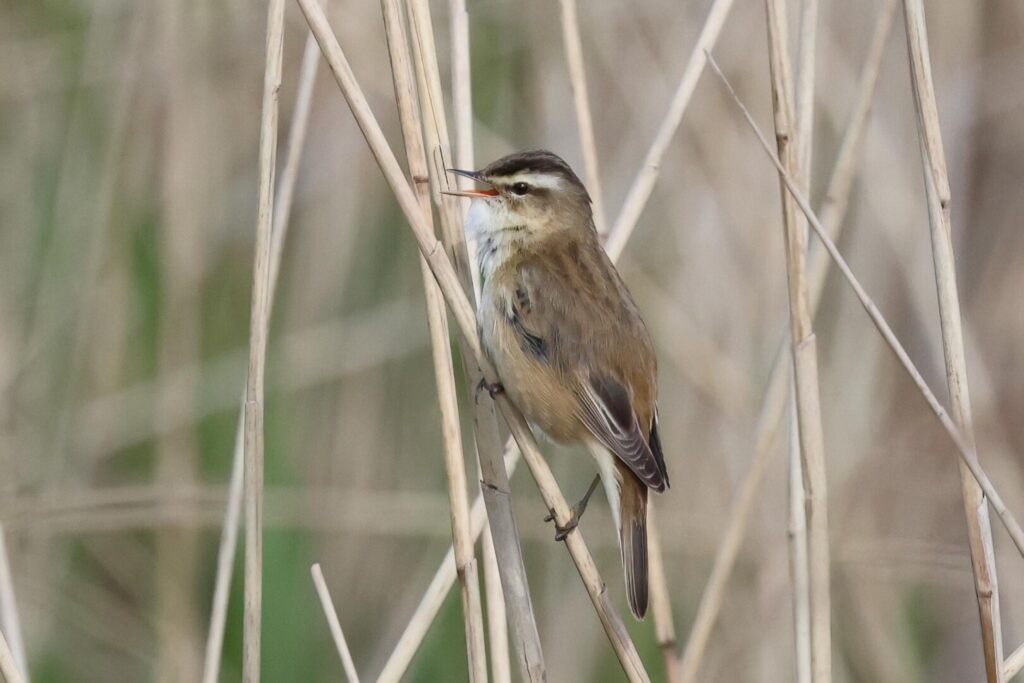
We heard Bearded Tits calling and turned to see a small group fly in and land just in the reedbed just beyond the ditch. We could just see them through the reed stems. They flew again and landed a bit further up and now we had a great view of them as they climbed up into the top of the reeds. They were mostly males, with powder-blue/grey head and black zapata moustaches. Smart!
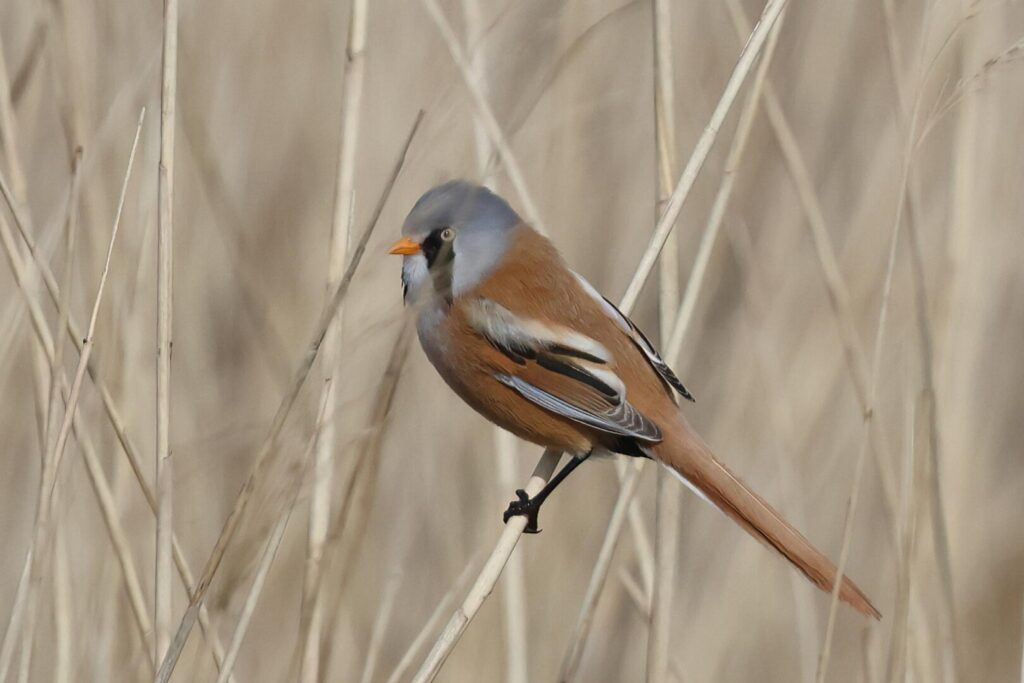
There were not many birds on the Serpentine today, but we did find two lingering drake Wigeon along with the Teal, Gadwall and a couple of Shoveler. Two Barnacle Geese were in the grass behind. There were only a few waders, just Redshanks and Avocets and one or two Lapwings further back. A Marsh Harrier drifted in from the reeds at the back and past us on the bank.
Continuing on to the Richardson’s Shelter, we went inside today to get out of the wind. A couple of Little Ringed Plovers and a Common Ringed Plover were having an argument on the bank close in front, giving us a good chance to compare the two species alongside each other. Further back, about half a dozen more Ringed Plovers were hiding in the saltmarsh vegetation. These ones looked a bit smaller and darker, probably northern ‘tundrae’ Ringed Plovers stopping off on their northbound migration.
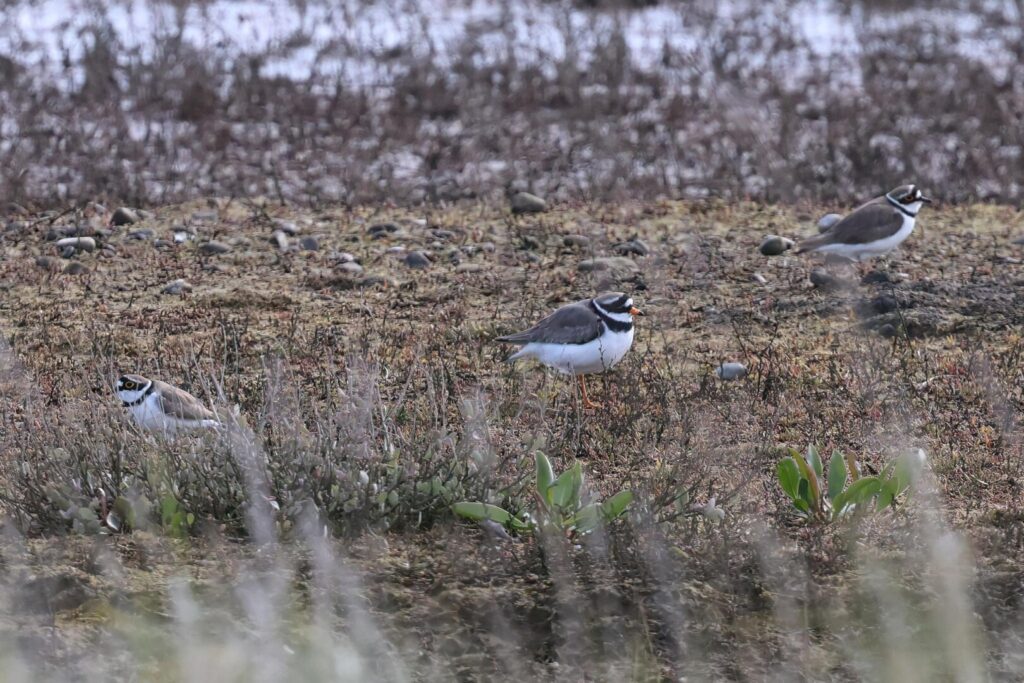
A flock of twenty of so Dunlin whirled round periodically before returning to feeding in the shallow water. On the small shingle island towards the back we could see some roosting waders and through the scope we could confirm they were mostly Knot, together with a couple of Turnstones, all sleeping. A Bar-tailed Godwit was feeding right over in the back corner.
Three Mediterranean Gulls flew over calling, two adults and a 1st summer, which tempted us back out, into the sun but also back into the wind. We walked on, up to the beach. It looked very quiet at first out to see, but a couple of pairs of Sandwich Terns flew past calling. A Ringed Plover was displaying over the fenced off area of shingle and scanning the remains of the ridge the other way we noticed a Little Ringed Plover which appeared to be trying to make a scrape. Not a great place to try to nest!
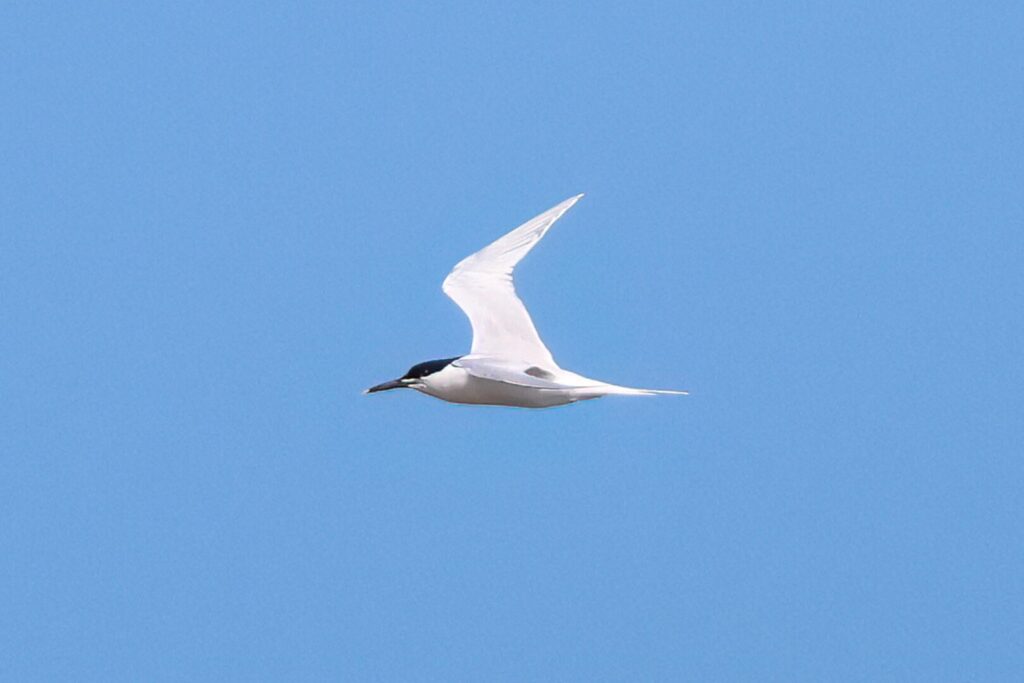
As we turned to leave the beach, we heard a Yellow Wagtail call as it flew overhead. There didn’t seem to be many migrants moving today, otherwise just a handful of Swallows. We made our way back to the minibus and round to the Visitor Centre to use the facilities. There didn’t appear to be much on the scrapes this morning and there was apparently no sign of the Long-billed Dowitcher at the moment, so we decided to try somewhere else before lunch. We drove east to Kelling and parked in the village before walking down the track towards the beach.
There were several Chiffchaffs and Blackcaps singing in the hedge in the lane. It was sheltered here, out of the wind and warm in the sun, and there were lots of butterflies – mainly Orange Tips, both males and females without the orange, Green-veined White, Speckled Wood, Peacock and Holly Blues fluttering around the hedges. Some other birders coming back the other way told us that there wasn’t much to see, no sign of the Common Sandpipers which had been here a couple of days ago and no new migrants in, but we continued on down to the Water Meadow anyway.
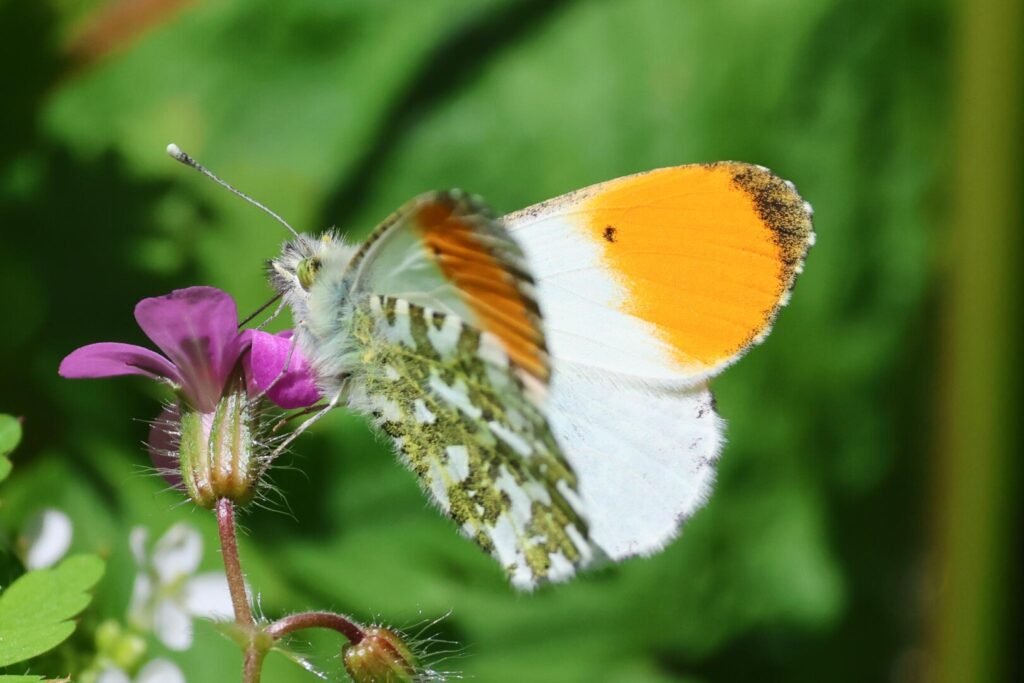
A male Stonechat perched up nicely on the brambles by the track and flitted on ahead of us. A Lesser Whitethroat rattled briefly but a Common Whitethroat was more obliging, singing from the top of the hedge. Several Linnets flew round calling and a couple of Sand Martins flew in to hawk for insects over the water. There were just a few ducks on the pool and a pair of Oystercatchers asleep in the grass.
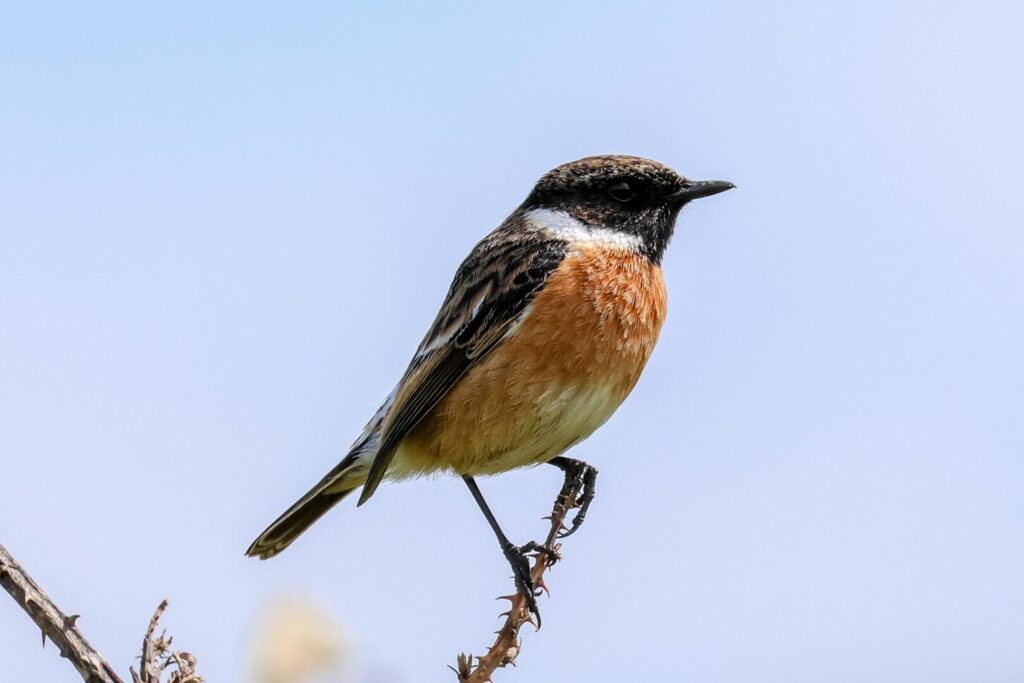
The path to the beach has been flooded and although it is drying out it was still very muddy. We decided to try further down along the lane towards Salthouse. Another Common Whitethroat sang from the alexanders and scanning from the corner we could see a distant Wheatear on a fence post. A Kestrel was hovering over Gramborough Hill and then two people walking along the base of the shingle half way along flushed a Short-eared Owl. We watched it fly across the grazing marshes and lost sight of it behind the bank as it flew towards the lane halfway to Salthouse.
It was time for lunch, so we walked back up to the village and then drove back to Cley, where we sat out on the picnic tables in front of the Visitor Centre in the sunshine. A Marsh Harrier flew in over the reeds the other side of the road.
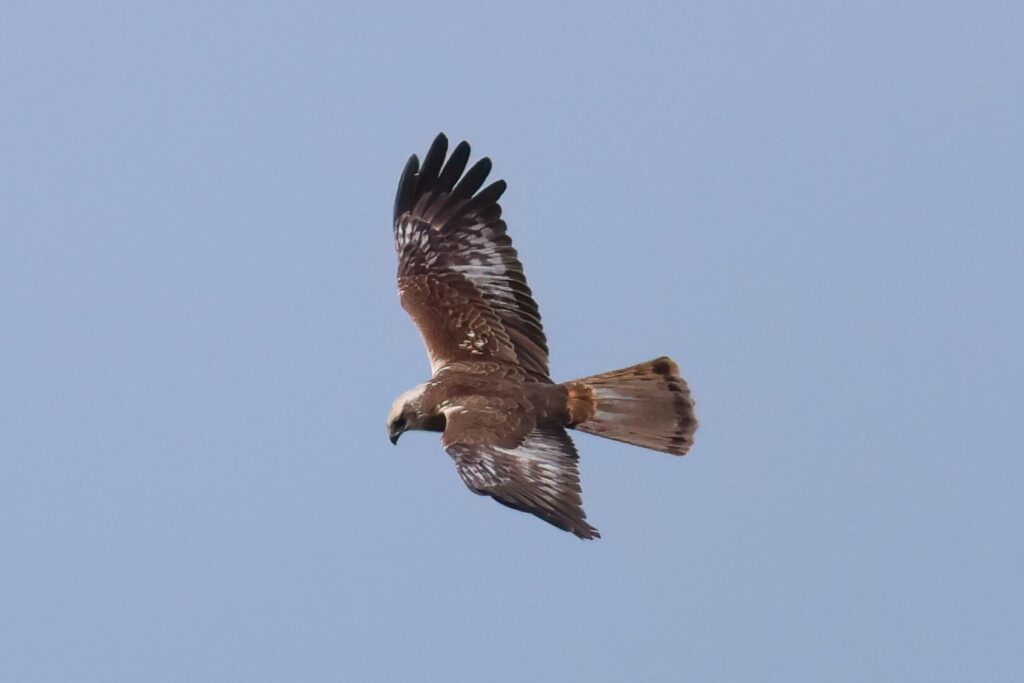
The Long-billed Dowitcher had reappeared on Simmond’s Scrape but despite getting the scope out, we couldn’t see it from the picnic area. We could see a few Black-tailed Godwits and a couple of Little Ringed Plovers on Pat’s Pool. There was nothing else on the reserve we hadn’t already seen and no one fancied the idea of going out just for the Dowitcher, so we decided to head inland and up to the heath instead.
There was no sign of the wind abating, if anything it had got a bit stronger, and it was rather exposed up on the ridge. We listened in the car park but all we could hear now were a Chiffchaff, a Willow Warbler and a couple of Robins. Walking up the path from the car park, we found a pair of Stonechats. Several Linnets flew round calling. We could hear a Dartford Warbler singing in the distance now, so set off to see if we could find it, but by the time we got there it had gone quiet. It was probably hiding in the gorse out of the wind.
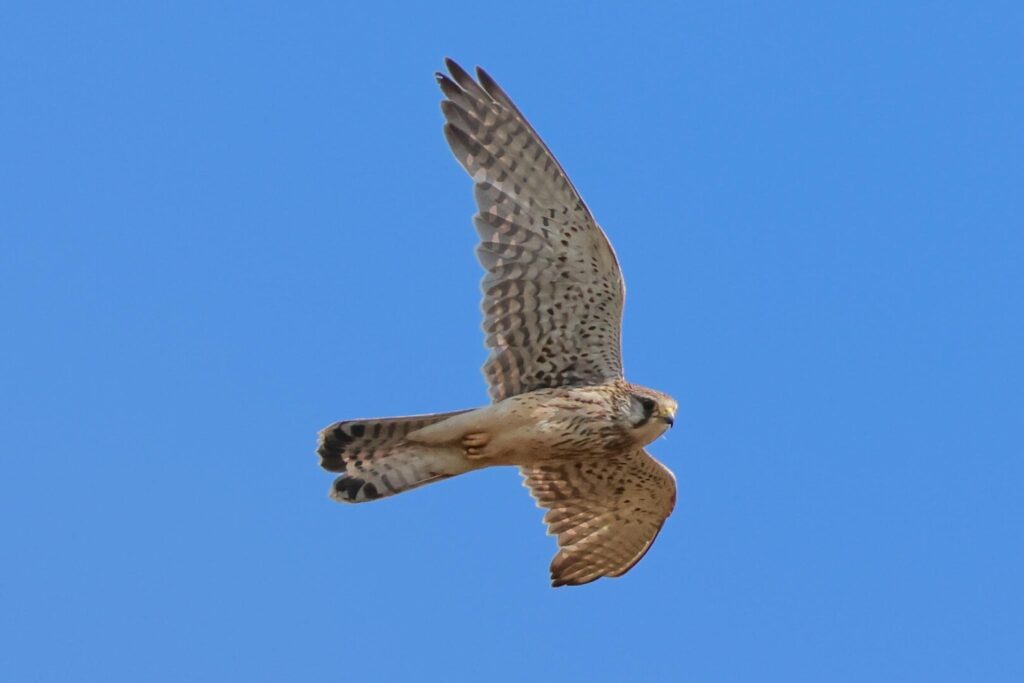
We walked on further round the heath but it seemed rather quiet, perhaps no surprise given it was the middle of the afternoon. One of the group spotted an Adder in the undergrowth, but it slithered away. A male Kestrel hovered above us. When it dropped down we thought it was to catch something, but a female appeared and the two of them took to the air together.
Stopping in the middle of another Dartford Warbler territory, we listened but couldn’t hear anything at first. A male Stonechat was flycatching from the top of a large gorse bush. We were just about to give up when a Dartford Warbler flew out of the gorse and landed on the top in front of us. Unfortunately it only stayed there a few seconds before dropping back down and a second then flew in after it. They flew again and dropped into a thicker patch of gorse and then the male flew up singing, before dropping beyond the gorse out of view.
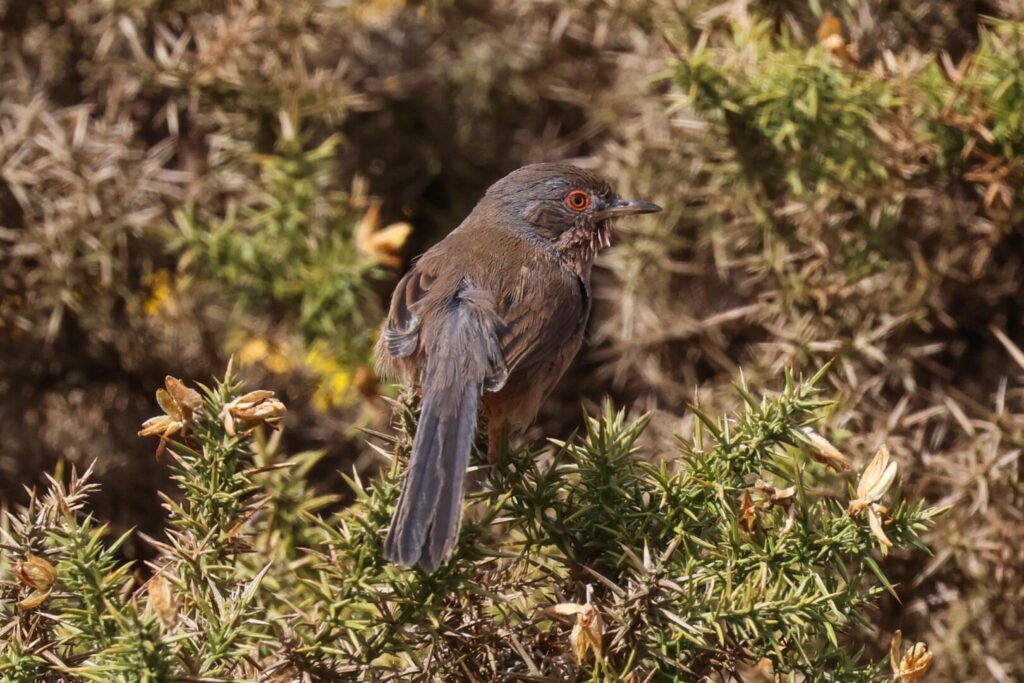
A Woodlark started singing quietly and then a pair flew up from the ground further up, just as we were distracted by the Dartford Warblers. By the time we walked on to look for them, they had disappeared, although we did disturb another Adder from the edge of the gorse. We walked back round but there was still no further sign of the warblers – given the wind and the time of day, we had been lucky to find them anyway, so we decided to start making our way back.
A Jay appeared briefly, down by a puddle on the path, and a Coal Tit flew in to a pine tree next to the track. We were almost back to the car park when we heard another Woodlark calling and a careful scan of the grass revealed one perched on a small tussock. We got the scope on it and had a nice view of it. It started walking and came out in a bare patch of ground where it was joined by a second Woodlark, a pair. We watched them for a while before they disappeared back into the longer grass.
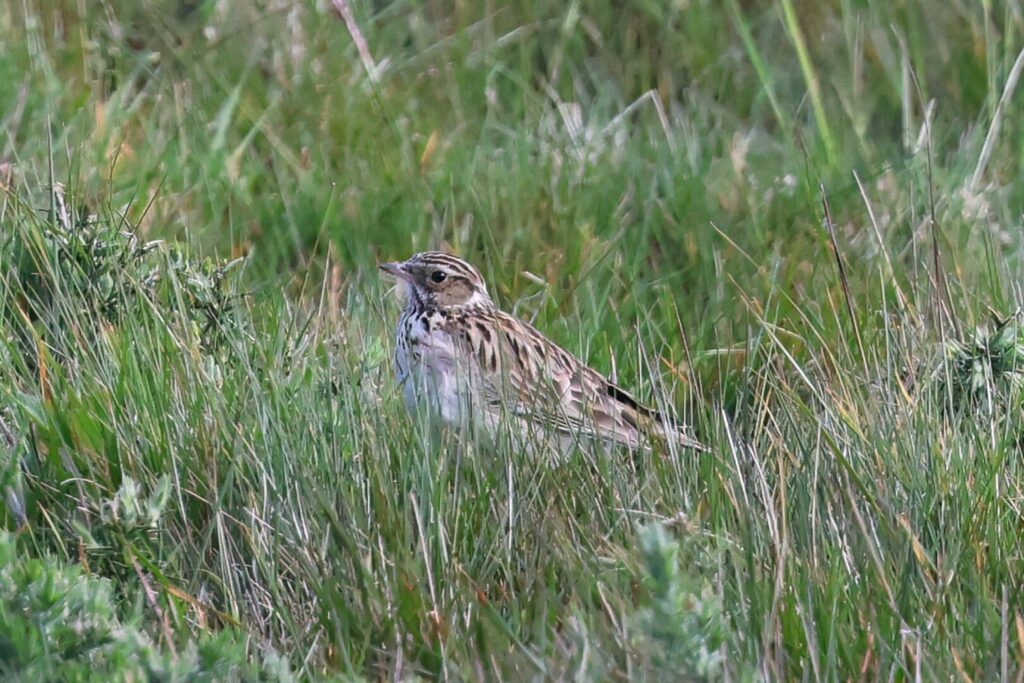
A nice way to end the tour, we walked back to the minibus and drove back to the guest house where we said our goodbyes.
















